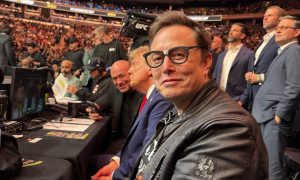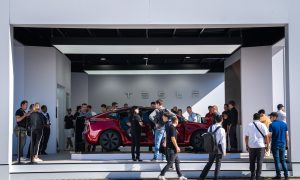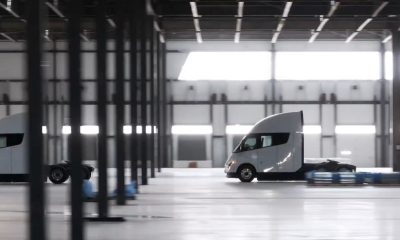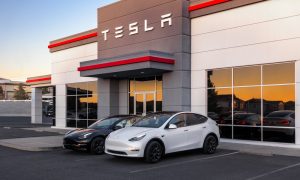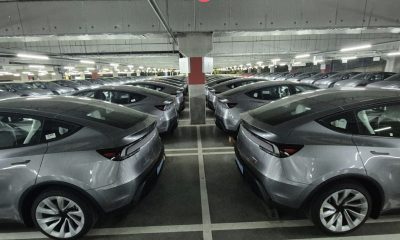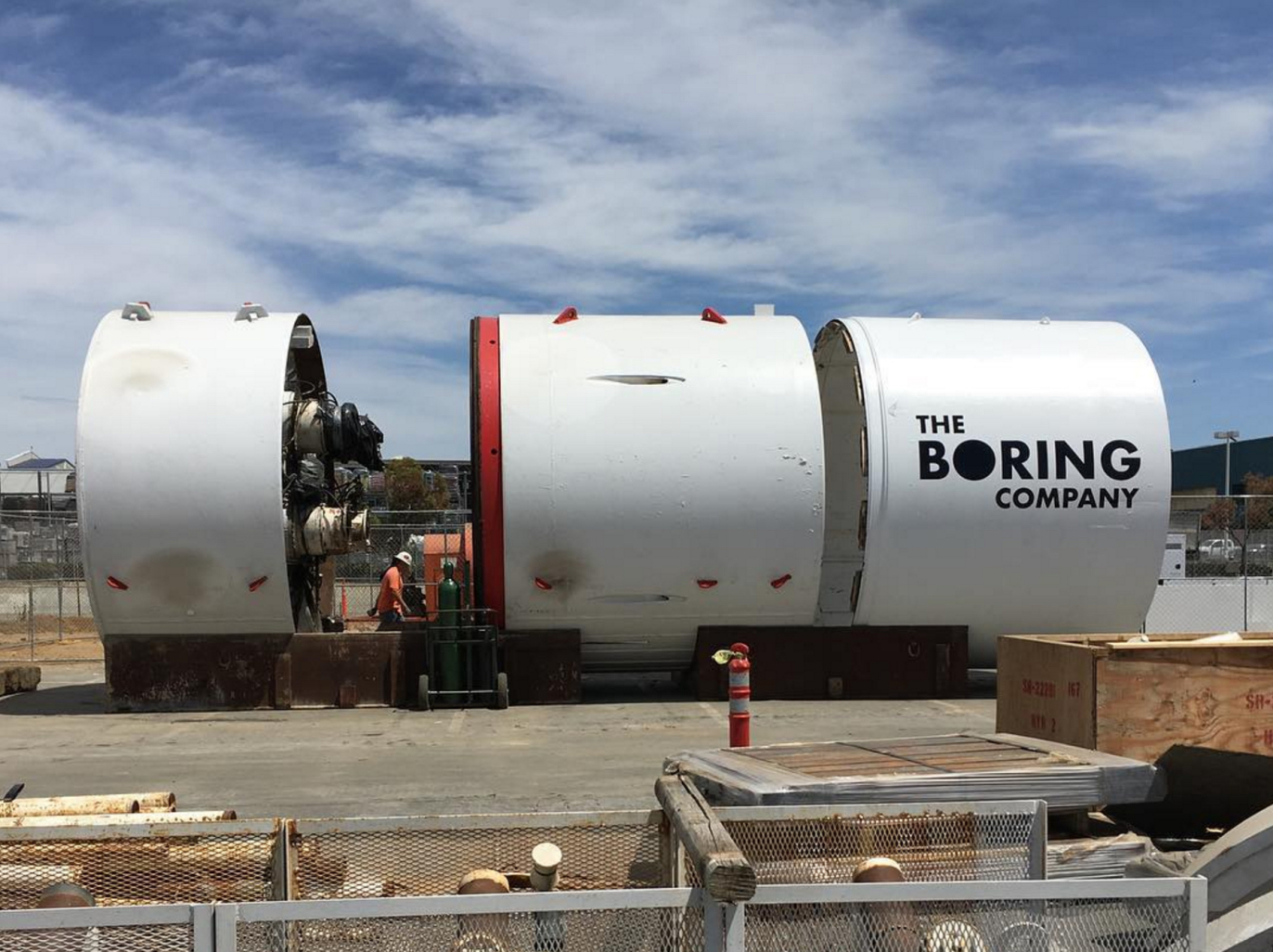

News
Steve Jurvetson talks The Boring Company: Short-range EV tunnels before Hyperloop
Despite recent chatter about The Boring Company using its tunnels for Hyperloop technology, high profile venture capitalist and Tesla and SpaceX board member Steve Jurvetson says that building smaller, short-range tunnels for electric vehicle transport is a realistic project that could change the entire concept of tunneling.
An aspect of The Boring Company’s original plan was to create a tunnel infrastructure underneath cities as an electric vehicle super highway. A proposed system of underground tunnels, first envisioned by Tesla CEO Elon Musk, would utilize electric skates that could be lowered into the ground and zipped to a destination. Musk recently demonstrated a working proof of concept of the elevator that would be used to lower a Tesla into the underground tunnel.
The Boring Company’s specific mission was burrowing smaller, cost efficient tunnels to house these point-to-point local highways.
Jurveston said at TechCrunch’s Disrupt San Fransisco that this idea would be great for both The Boring Company and Musk to pursue, maybe even in lieu of Hyperloop technology implementation.
“I personally love the idea, in fact even more than the Hyperloop idea, of digging these tunnels,” Jurveston said. “The inside I think that’s so powerful is that if you only envision electric vehicles in your tunnels you don’t need to do the air handling for all carbon monoxide, carbon dioxide, you know, basically pollutants for exhaust. You could have scrubbers and a variety of simpler things that make everything collapse to a smaller tunnel size, which dramatically lowers the cost … The whole concept of what you do with tunnels changes.”
The Boring Company said in early August that its tunnels would be used for Hyperloop technology, rivaling companies like Hyperloop One and Hyperloop Transportation Technologies. Rumors have swirled that Musk also wants to develop the Hyperloop from New York City to Washington, D.C., a system that would turn a 4-hour drive into a 29-minute ride.
Jurveston made a good point in the panel discussion, saying that by developing shorter highways first, The Boring Company would be able to “cut [its] teeth” before developing full scale, city-to-city Hyperloop technology.
“In the near term you do something incremental,” Jurveston said. “Thinking about small local links, that’s very compelling. The Hyperloop concept makes more sense when you’re commuting across a longer distance … to me that [Hyperloop routes] just feels like it comes later. You probably cut your teeth on the things The Boring company has shown, which is taking normal cars through a tunnel.”
Lifestyle
Elon Musk jokes he will join Mr Beast’s “100 Men vs 1 Gorilla” challenge
It’s a good sign, if any, that the overworked Musk is becoming a bit more lighthearted again.
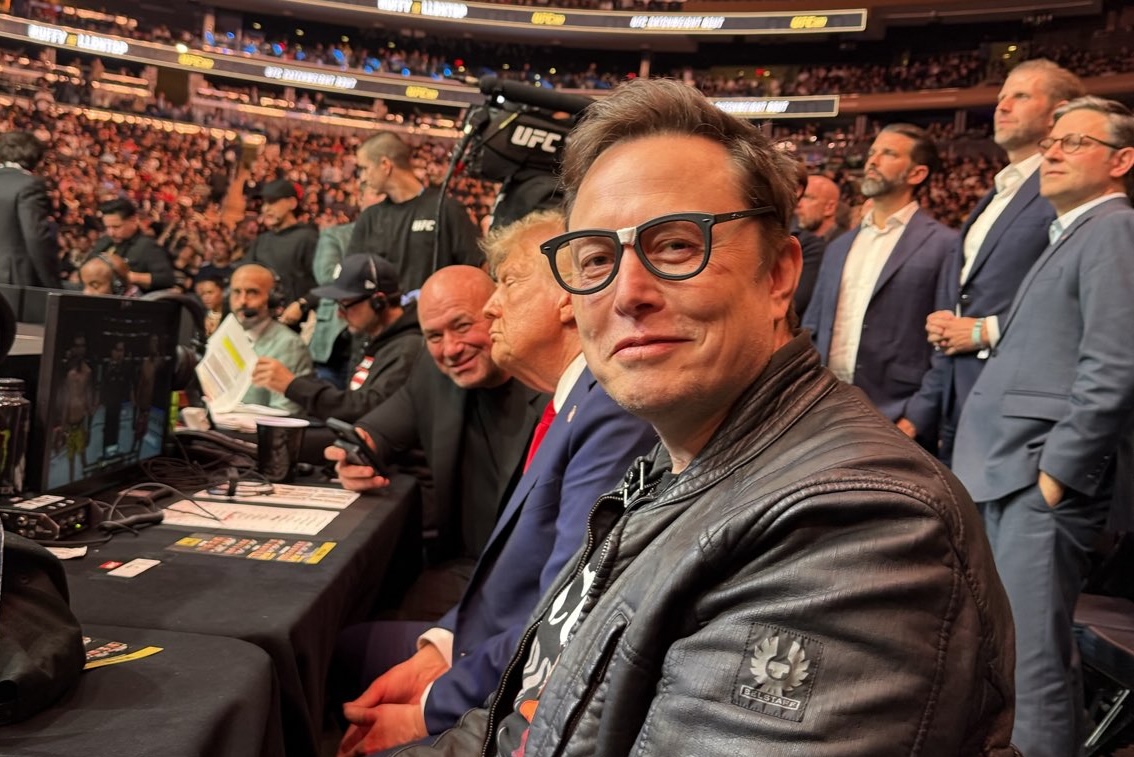
Following the first quarter Tesla earnings call, CEO Elon Musk seems to have become a bit more relaxed—relaxed enough to joke about fighting a gorilla with 99 other people, at least.
It’s a good sign, if any, that the overworked Musk is becoming a bit more lighthearted again and not too busy picking fights with politicians on social media.
The Viral 100 Men vs 1 Gorilla Challenge
Over the weekend, a post on social media platform X went viral. The post itself was quite simple, with user @DreamChasnMike stating that he thinks 100 men could beat one gorilla. “Everybody just gotta be dedicated to the sh*t,” the X user joked. The post exploded on the platform, garnering 284 million impressions as of writing.
The silly question also triggered a massive debate about whether 100 men would really stand a chance against a literal gorilla. Some users even lamented that the premise was a sign of male hubris. Nevertheless, the question proved to be a fun topic on X, with some more dedicated users even posting simulated videos of what the “100 Men vs 1 Gorilla Challenge” could look like.
Mr. Beast and Elon Musk Join In
The premise is quite similar to other viral videos from noted YouTube creator Mr. Beast, so it was no surprise that edited images of Mr. Beast YouTube thumbnails with “100 Men vs a Gorilla” also started spreading on the social media platform. Mr. Beast, who tends to be game to such silly ideas, actually reposted the edited image, joking “Need 100 men to test this, any volunteers?”
In true Elon Musk fashion, the Tesla and SpaceX CEO noted that he would join the challenge. “Sure, what’s the worst that could happen” Musk wrote in his post on X. Musk’s reply triggered quite a few laughs on X, with some stating that the world probably still needs the CEO.
While silly, Musk’s comment and his recent, more frequent posts about his companies’ products like Starlink and Grok have been received well by his supporters. Over the past months, after all, Musk has been very political and quite confrontational on social media. With Musk soon taking a step back from the Department of Government Efficiency’s (DOGE) daily operations, however, it seems like X will soon get a more tempered and lighthearted Elon Musk once more.
News
Big Tesla win? Sec Lutnick says cars with 85% domestic content will face zero tariffs
That’s a big competitive advantage for Tesla’s best-selling vehicle.
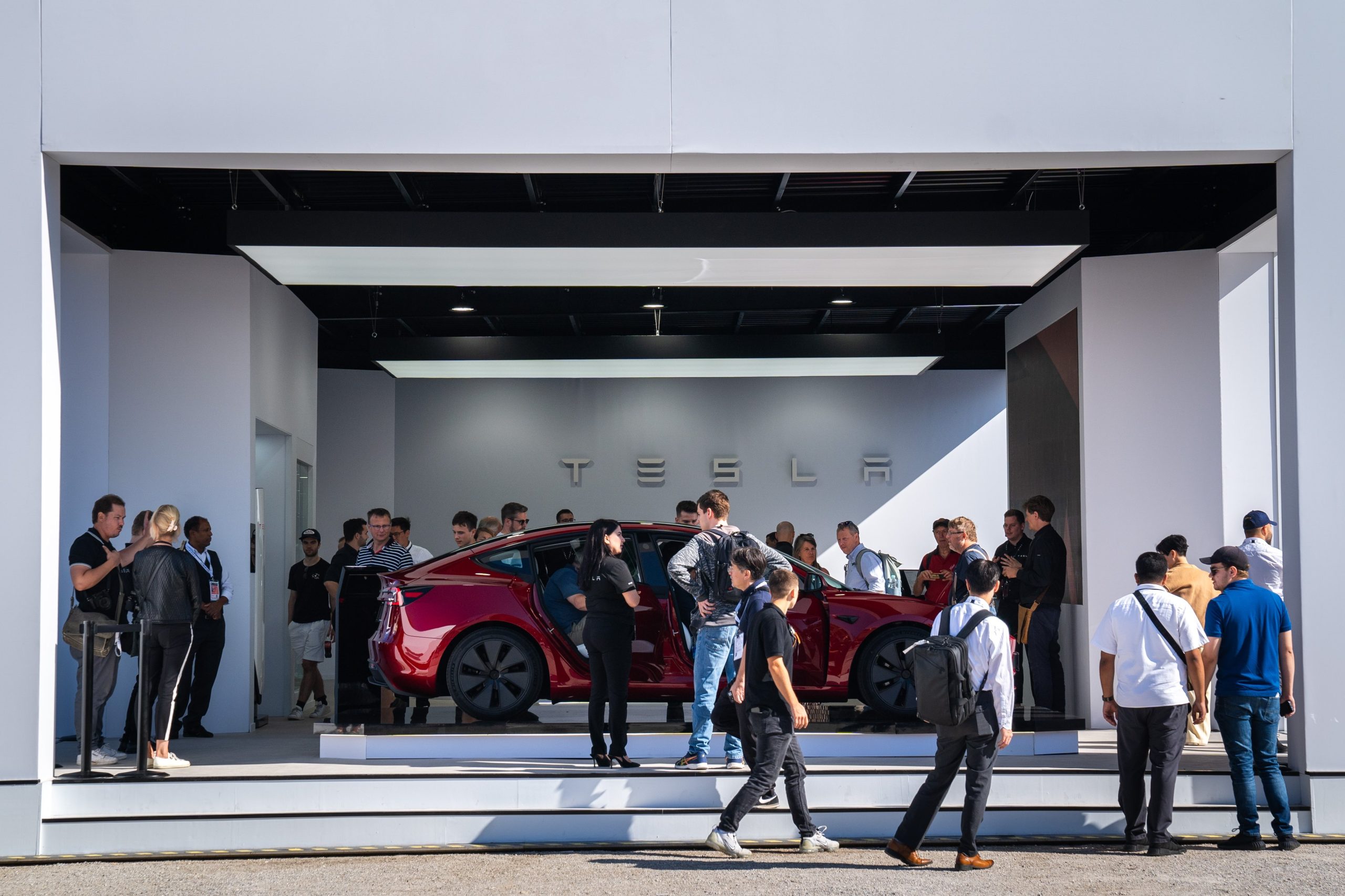
It appears that Tesla may see itself with a notable advantage in the United States.
This is, at least, as per recent comments from United States Commerce Secretary Howard Lutnick.
Lutnick’s Comments
In recent comments to reporters, Lutnick stated that vehicles finished in the United States with 85% domestic content will have no tariff applied, as noted in a report from The Guardian. Automakers that meet this threshold stand to gain an advantage in the U.S. auto sector, especially considering the Trump administration’s aggressive tariffs.
As per Lutnick, the administration’s auto tariffs will apply to foreign carmakers that are building their vehicles in the United States. “This is ‘finish your cars in America and you win’,” Lutnick stated.
Big Tesla Advantage
Lutnick’s comments were received positively by Tesla watchers on social media, many of whom noted that the threshold would probably be met only by the electric vehicle maker’s cars. Teslas that are sold in the United States are built in the United States, and they have consistently ranked among the most American cars in the country for several years running.
Back in December, for example, American University’s Kogod School of Business released its Made in America Auto Index, which explores the total domestic content of vehicles that are available for purchase today. In its rankings, only three vehicles received a total domestic content score of 85% or higher—the Tesla Model Y, Model Y Long Range, and the Model 3 Performance.
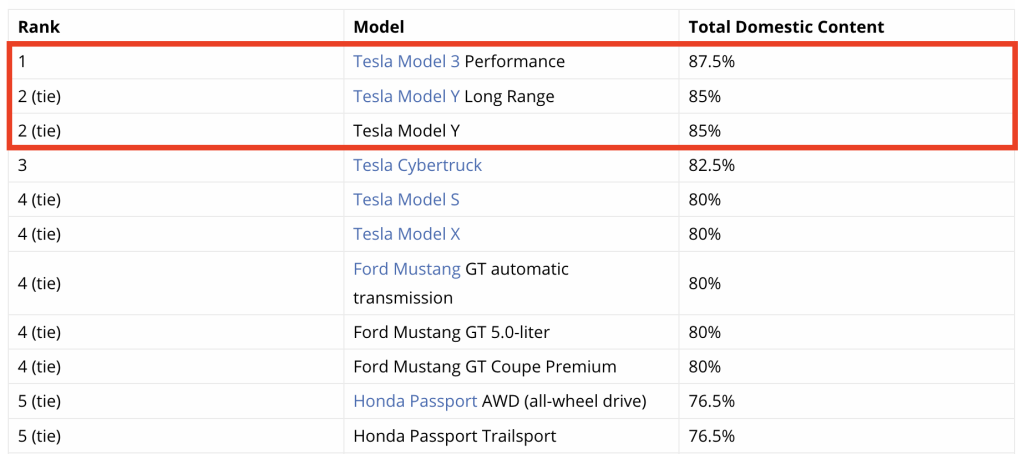
The two Model Y variants received a total domestic content score of 85%, while the Model 3 Performance had a total domestic content of 87.5%. If Secretary Lutnick’s comments are any indication, these three vehicles would be subjected to zero tariffs. This bodes well for Tesla, as the Model Y is the company’s best-selling vehicle by a notable margin.
Elon Musk
Tesla reveals Semi fleet data, shows off new feature and infrastructure plans
The Tesla Semi is one of the company’s most-anticipated releases, and it could be getting even better as things move toward mass production.
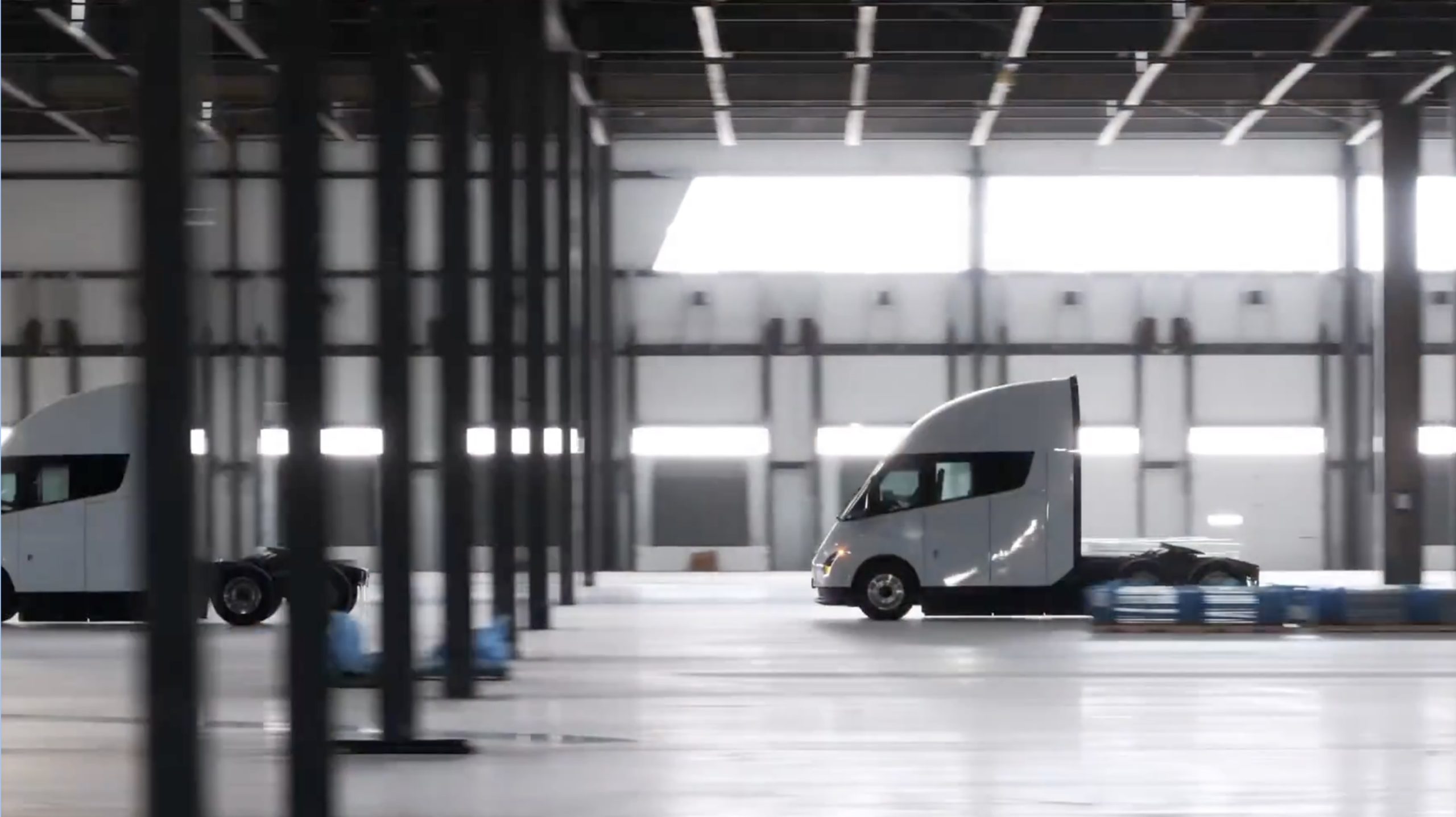
Tesla revealed some new Semi fleet data, as well as a new feature the truck will have, and expanded on plans for infrastructure at the ACT Expo today in Los Angeles.
The Tesla Semi is one of the company’s most anticipated releases, and although it has already made its way into several company fleets, other companies are waiting for the automaker to fulfill their orders.
Tesla recently reaffirmed its mass production date of late 2025, hoping to build 50,000 Semi units annually at a new factory in Reno, Nevada.
At the ACT Expo, Tesla revealed some new details about the truck, including current fleet data, a new feature that will be a big selling point for many companies interested in the vehicle, and future infrastructure plans.
Fleet Data
Tesla has already accumulated over 7.9 million miles across its test fleet, the company said at the event. This includes 26 vehicles with over 100,000 miles on them, an impressive feat considering they are only taking regional runs, as of now.
The most notable companies with the vehicle are PepsiCo. and Frito Lay, both of which have spoken highly of the Semi’s ability to handle longer days. Drivers have reported that the Semi has helped them complete 1,000-mile travel days.
Tesla has more than 26 @tesla_semi with over 100,000miles on them
Cumulatively 7.9 million miles across the Semi test fleet
Full presentation going up soon ⚡️ pic.twitter.com/3TEpseb29i
— Kyle Conner (@itskyleconner) April 29, 2025
The first phase of production units will be integrated into Tesla’s logistics operations for real-world testing, which is something that has already been done.
Customer deliveries are expected to begin next year, something that was reiterated during the company’s most recent earnings call.
Tesla Semi’s New Feature
The semi will equip a 25-kilowatt electric Power Take-Off system that will help companies power auxiliary features like refrigeration, hydraulic systems, compressors, and more.
This is a massive feature, especially for companies that will be transporting perishable goods using the Semi. This will become especially important as it starts making cross-country runs and more companies begin taking delivery of the vehicle as production ramps up.
Cool! @tesla_semi will feature a 25kW e-PTO system to power any loads needed such as a refrigerated trailer pic.twitter.com/Hncwzi6AA8
— Kyle Conner (@itskyleconner) April 29, 2025
Expansion to Public and Private Charging Infrastructure
The Semi utilizes the Megacharger for its charging needs, and many sites have been installed already. Frito-Lay is expanding its Megacharger infrastructure by building eight new piles at its Bakersfield, California, factory.
We reported on that earlier this month:
Tesla Semi fleet from Frito-Lay gets more charging at Bakersfield factory
However, Tesla has many more megawatt-level sites that are under construction for public Semi charging: 46, to be exact.
It also said it has more fleet sites that are underway, one of them being the Bakersfield factory’s infrastructure.
-
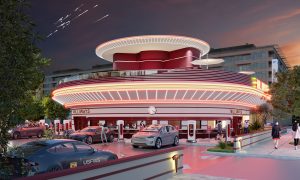
 News1 week ago
News1 week agoTesla’s Hollywood Diner is finally getting close to opening
-
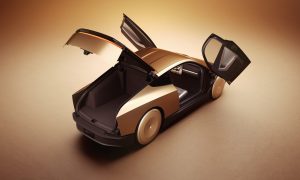
 Elon Musk2 weeks ago
Elon Musk2 weeks agoTesla doubles down on Robotaxi launch date, putting a big bet on its timeline
-
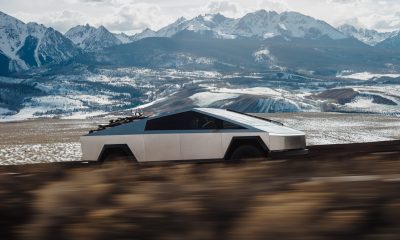
 News4 days ago
News4 days agoTesla is trying to make a statement with its Q2 delivery numbers
-

 News2 weeks ago
News2 weeks agoTesla’s top investor questions ahead of the Q1 2025 earnings call
-
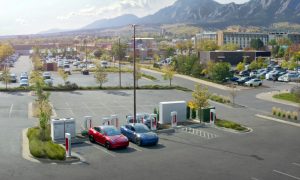
 News2 weeks ago
News2 weeks agoTesla reveals its Q1 Supercharger voting winners, opens next round
-
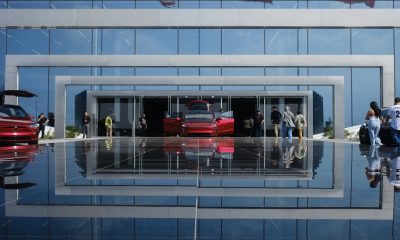
 Investor's Corner1 week ago
Investor's Corner1 week agoLIVE BLOG: Tesla (TSLA) Q1 2025 Company Update and earnings call
-
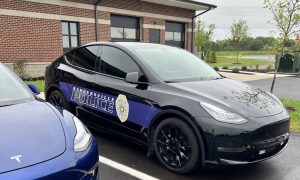
 News2 weeks ago
News2 weeks agoTesla police fleet saves nearly half a million in upkeep and repair costs
-
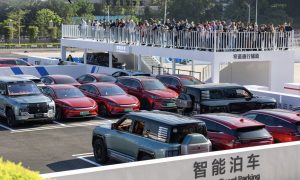
 News2 weeks ago
News2 weeks agoGlobal EV sales climbed 29% in March, powered by China & Europe


